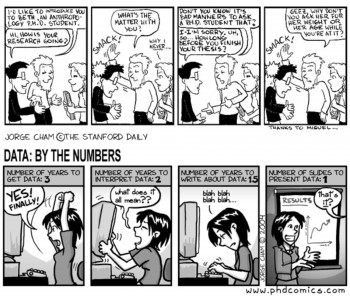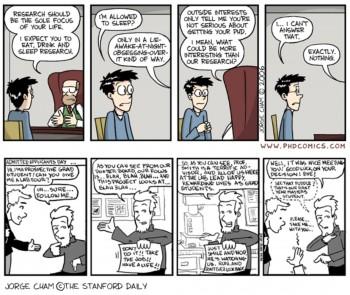Who decides what kinds of science are important? Who picks the projects that get funded, get published, or get taught? Who decides the future of practicing science? With my fellow CASHP student Laura Reyes, I decided to find out by assisting the Council of Scientific Society Presidents (CSSP) at their biannual policy conference in downtown DC.
The CSSP is a gathering of movers and shakers from the scientific community. Representatives from societies as diverse as the Society for Industrial Microbiology, National Science Teachers Association, the International Society for Optics and Photonics, and the Crop Science Society of America travel to DC twice a year to sit at one giant table and discuss the future of science in our nation. The topic changes at each meeting, and guest speakers are invited to help lead specific discussions. December’s conference focused on a subject particularly poignant for me, a grad student – how do we keep students interested in science?
From guest speakers like Philip Zimbardo (psychiatrist and designer of the controversial “Stanford Prison Experiment”), Cora Marrett (Deputy Director of the National Science Foundation), and John Holdren (Director of the White House Office of Science and Technology), I learned a surprising fact while serving at the conference. We don’t lose most science students at the elementary school or high school levels. No. We lose the greatest percentage of would-be-scientists during their undergraduate years. Plenty of young Americans enter college expecting to graduate with a science major, but a lack of research opportunities, the delayed rewards of lab work, and archaic teaching practices convince them to try “easier” majors.
A similar drop-out effect occurs in graduate school, when young scientists become overwhelmed by the unpredictability of a career in science. Jorge Cham, usually the hilarious author of PhD Comics (pictured in this blog), spoke seriously at the conference about the mental cost of graduate school. Stats from psychological and educational studies of graduate students suggest that two-thirds of all graduate students suffer from depression and 95% described themselves as overwhelmed. Doing science is clearly not for the faint of heart.
Members of the CSSP are going to be working hard to keep more students in science by improving opportunities for research, providing more training and better teaching methods, and establishing solid support networks for undergrad and grad students. We at CASHP are also doing our part, especially by exploring alternative methods of teaching science. Right now, doctoral candidate Amy Bauernfeind is spending part of her time preparing public science reports for the American Association for the Advancement of Science. Dr. Chet Sherwood, Liz Renner, and I have just completed a new Introduction to Bioanthropology laboratory manual that includes more opportunities for hypothesis-testing in the classroom. Dr. Bernard Wood, Jen Baker, and Serena Bianchi are currently developing a new program based at CASHP that will provide long-distance courses on the topic of human evolution. We hope that using new and improved methods of teaching science will allow us to reach, inspire, and cultivate a generation of young scientists that know they can succeed in a scientific career. Science may be hard, but – given the right resources and support – it’s a world of constant wonder and discovery. Who decides the future of science? I do. And so do you.



